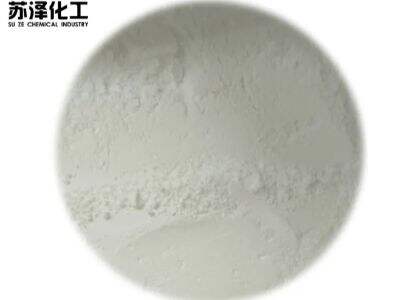Dibenzoyl Peroxide Powder is a special kind of powder that has some really cool features and uses. In the areas of science and technology, it matters for a couple of reasons. Here, we shall explore Dibenzoyl Peroxide Powder's chemical composition, its reactions with other chemical compounds, solubility, usage in different products, and importantly, precautions to be adhered to while handling it.
What is the Structure of Dibenzoyl Peroxide Powder?
Dibenzoyl Peroxide Powder appears as a white powder resembling small crystals. It consists of three types of atoms: carbon, hydrogen and oxygen. Dibenzoyl peroxyde powder- C14H10O4; it shows how many atoms of this and that reprent in it. The arrangement of these atoms is also quite special. The powder has a special structure that consists of two benzoyl groups connected by an oxygen atom. This specific arrangement is crucial because it allows the powder to chemically react in unique and fascinating ways that make it incredibly useful for many different uses.
What Is Dibenzoyle Peroxide Powder Reaction?
Dibenzoyl Peroxide Powder is quite fascinating, especially when it changes in the heat. This is known as decomposition. Theres a bond between a pair of oxygen atoms that breaks when the powder is heated. As this occurs, it exudes oxygen gas into the atmosphere and produces something called benzoyl radicals. These radials are highly reactive, meaning they can easily initiate new chemical reactions. Dibenzoyl peroxide powder is also widely used in the production of various types of plastics and rubber products due to this property of reactivity. Manufacturers love using it for making solid and lasting products.
Dibenzoyl peroxide powder solubility in liquids
Because Dibenzoyl Peroxide Powder is not water-soluble, it means it does not dissolve well in water. But it dissolves quite well in other kinds of liquid, called organic solvents, including acetone, ethanol and chloroform. Dibenzoyl peroxide powder can then diffuse through the other materials that are mixed up, helping with the manufacturing process. However, how it dissolves is a variable depending on heat or how much liquid it is in when we add it. The resulting solubility which can be manipulated provides manufacturers with ease-in-operation while working with the powder while making their product.
In Which Areas is used Dibenzoyl Peroxide Powder?
DBPO Powder plays a very important role in polymer science. Polymers are large molecules that appear in a wide range of everyday products. This powder commonly acts as a polymerization initiator, triggering long polymer chains in related materials, including acrylics, vinyl resins, and silicone rubbers. The multiplication in the polymeric chains is achieved by adding dibenzoyl peroxide powder; this process is called cross-linking. The result is far more intensive and stable products, which can be dangerous for numerous procedures. It is so powerful that most scientists and engineers use it for their projects.
Safe Use of Dibenzoyl Peroxide Powder
Dibenzoyl Peroxide powder is a useful chemical compound for numerous applications, but care should also be exercised when working with this substance, especially in a lab setting. Dibenzoyl Peroxide Powder has a very high reactivity property which is why it is always kept at a cool place away from the heat or a flame so that it doesn't react to give us an unwanted response. When working with this powder, you must wear proper protective equipment, including gloves and goggles, to prevent any potential irritation to your skin and eyes. It is important to seek medical attention immediately if you touch or accidentally swallow the powder.



